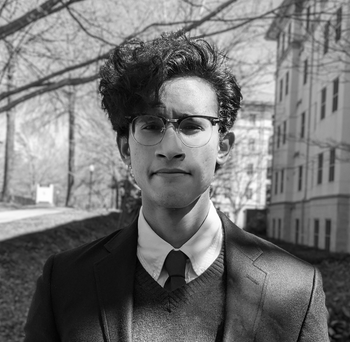OPINION: 2022 college rankings reflect anti-conservative bias in higher ed
It is possible that, when doing peer assessments, liberal academics may be inclined to rate liberal institutions higher than their conservative counterparts.
Americans perceive bias in higher education to varying degrees.
According to Pew Research, 72% of Republicans and 48% of Democrats believe that universities favor one set of political views over another. Most Americans, per Pew’s data, also believe that professors allow their personal political beliefs to enter the classroom and that colleges are doing too much to shield students from potentially offensive ideas.
While it is commonly held that academic institutions tend to advance particular political agendas, is there any empirical evidence that supports such a perception? If so, what is the explanation for such a phenomenon?
The answer may be found in college rankings.
In 2009, Researchers at the Center for College Affordability and Productivity found evidence that college ranking indexes incentivize universities to pursue certain behaviors as a means to achieve a higher ranking.
If these findings are accurate, the methodology of the Wall Street Journal/Times Higher Education “2022 College Rankings List,” among others, may be pushing schools to divert more resources to progressive racial or ethnic initiatives.
Ten percent of a school’s rank in the WSJ/TIMES index is determined by measures of diversity and inclusion. Student racial diversity (3%), inclusion of low-income students (2%), proportion of international students (2%), and the racial diversity of faculty (3%) comprise the specific breakdown of that 10%.
Collectively, these measures are weighted more heavily than average student debt (7%) and the amount of research produced by faculty (8%), and only slightly less than graduation rates (11%).
Applying the findings discussed earlier, it would be reasonable to assume that colleges promote diversity and inclusion at least partially to improve their standings in college rankings. If true, this would contribute to the dominance of progressivism on American college campuses.
The second measure of interest from the WSJ/TIMES methodology is its inclusion of institutional academic reputation as determined by the results of a survey they administer to “leading scholars.”
Academic reputation accounts for a further 10% of a university’s rank. While it may seem innocuous on the surface, a potential problem arises when considering that the vast majority of academics and academic administrators are self-described liberals.
It is possible that, when doing peer assessments, liberal academics may be inclined to rate liberal institutions higher than their conservative counterparts. Though some may be inclined to doubt the existence of such bias, there is empirical evidence suggesting that it may be real.
Last year, Michael Conklin, a law professor at Angelo State University, conducted a statistical analysis to investigate whether ideological bias was present in the peer ranking of law schools.
To do this, he gathered ranking data from the ten most conservative and ten most liberal law schools ranked by US News and World Report. Conklin then calculated the degree to which each school’s peer rank deviated from its actual rank. He reasoned that if those ranking law schools in peer surveys were unbiased, law school peer ranks should roughly align with their general ranking when comparing conservative to liberal schools.
Conklin found that the peer ranking of the ten most conservative schools was, on average, significantly lower than their general rank and that the peer ranks of the ten most liberal schools were slightly better. These results were determined to be statistically significant, meaning it is highly unlikely that the relationship can be attributed to chance.
[RELATED: Cardozo School of Law requires students to take course on ‘race and racism’ to graduate]
The 2009 Center for College Affordability and Productivity study further suggests that colleges alter their behavior to conform to the ranking criteria provided by organizations like US News and World Report or the Wall Street Journal.
As it relates to diversity and inclusion, this puts pressure on all institutions to engage in efforts that conform to progressive goals. Conservative institutions that disagree with such practices or policy, as a result, may suffer in their rankings while other schools engage in diversity initiatives to boost their standing.
If bias exists in an area as important as college rankings, those producing such figures have an incentive to correct it to maintain their credibility.
When discussing the implications of his findings as they relate to law school peer rankings, Conklin argues that peer rankings should be dropped from consideration altogether. According to him, substantive measures of success like the bar passage rate are more important to prospective students than the opinions of academics.
A similar solution may apply to weighting select iterations of diversity in overall rankings.
How many students or staff of a given race occupy a campus has no bearing on the quality of education provided.
Perhaps such variables should be excluded from future rankings, with the weight attributed to them being redistributed to more substantive measures of institutional quality, such as the average income of graduates or matriculation rate of those admitted.

